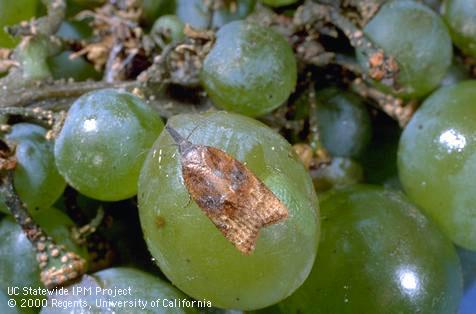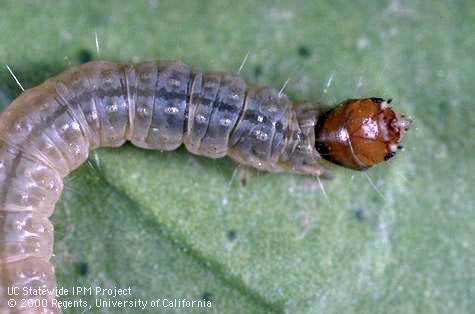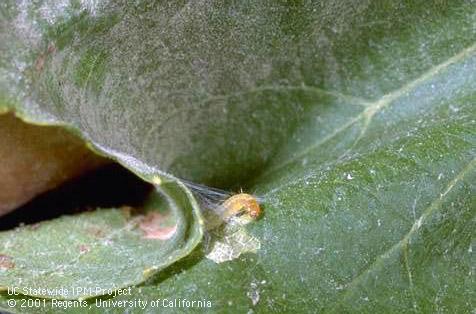
Omnivorous leafroller
| Primefact number | Edition | Published | Author |
|---|---|---|---|
| 1271 | First | Jan 2013 | Plant Biosecurity and Product Integrity |



Omnivorous leafroller (Platynota stultana) is an exotic plant pest. This pest is a serious threat to Australia’s viticulture and horticulture industries.
The adult omnivorous leafroller is a moth (Figure 1). The omnivorous leafroller has a broad host range and includes the horticultural crops of citrus, cotton, pears, grapevines, peach, capsicum and maize.
Notifiable status
Omnivorous leafroller (Platynota stultana) is not a notifiable plant pest in NSW.
However, if you suspect Omnivorous leafroller:
- Call the Exotic Plant Pest Hotline 1800 084 881
- Email biosecurity@dpi.nsw.gov.au with a clear photo and your contact details
A full list of notifiable plant pests and diseases can be found in Schedule 2 of the NSW Biosecurity Act 2015.
Damage
The omnivorous leafroller caterpillar feeds on the leaves, flowers and developing berries of grapes.
The most significant damage in grapevines occurs after veraision when feeding allows secondary pathogens to enter the fruit at the damage site. Feeding caterpillars cause loss of yield and lower fruit quality.
Description
The omnivorous leafroller moth varies from 10 to 20 mm in length and appears bell shaped from above. It has blackish grey snoutlike mouthparts that protrude forward from its head. The forewings are a dark rusty brown with the tip being tan in colour.
Omnivorous leafroller caterpillars can have either a black or brown head capsule depending on the stage of maturity.
Mature caterpillars range in colour from cream to brownish green with whitish slightly convex tubercles on the top of the abdomen (Figure 2).
Behaviour
The omnivorous leafroller overwinters as a caterpillar in grape mummies, vineyard weeds and other trash in the vineyard.
In spring the caterpillars complete their development. Pupation takes place in a silken cocoon in a rolled leaf.
Moths emerge and lay shingle-like eggs in egg masses on grape leaves. After about 5 days the eggs hatch and the caterpillars tie two young leaves together with webbing to form a nest from which they feed (Figure 3). Caterpillars develop over five instar stages.
Later in the season nests can be found in flower clusters and bunches as well as on leaves and shoot tips.
Omnivorous leafroller caterpillars usually drop to the ground on a spun thread when they are disturbed.
Generally there are four flight periods by adult moths each year. Moth flights occur in spring, early summer, mid summer and early autumn. The first of the caterpillars appear a short time after a flight.
Host range
The omnivorous leafroller has a broad host range which includes the horticultural crops of citrus, cotton, pears, grapevines, peach, capsicum and maize.
Distribution
The omnivorous leafroller is only known to occur in Mexico and the United States of America.
Spread
Moths are dispersed by flight.
Caterpillars could be carried in grape bunches.
Actions to minimise risks
Put in place biosecurity best practice actions to prevent entry, establishment and spread of pests and diseases:
- practice “Come clean, Go clean”
- ensure all staff and visitors are instructed in and adhere to your business management hygiene requirements
- source propagation material of a known high health status from reputable suppliers
- monitor your vineyard regularly
- keep records

